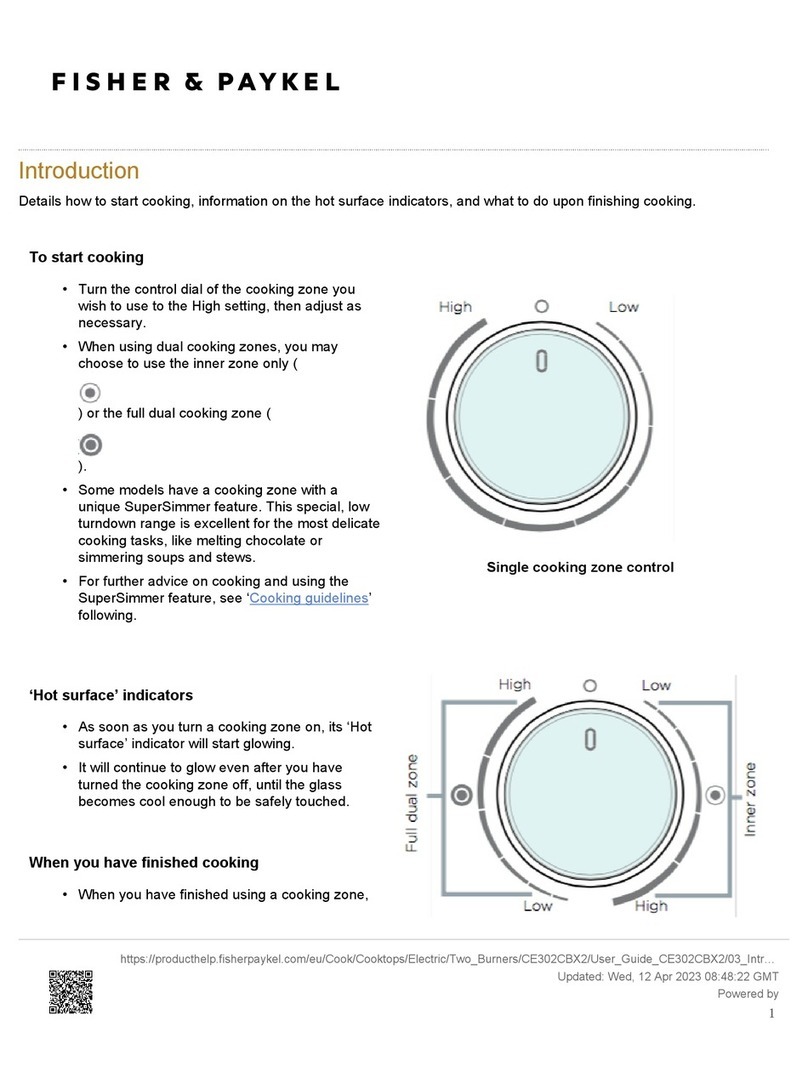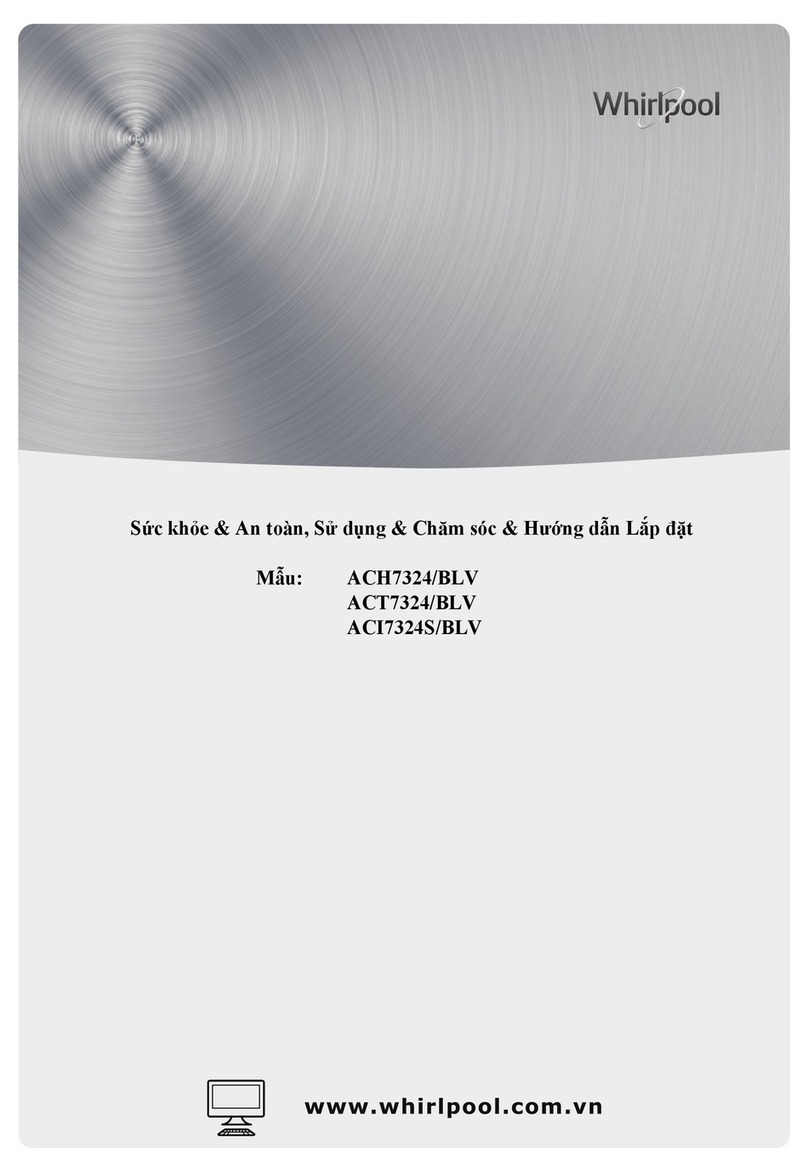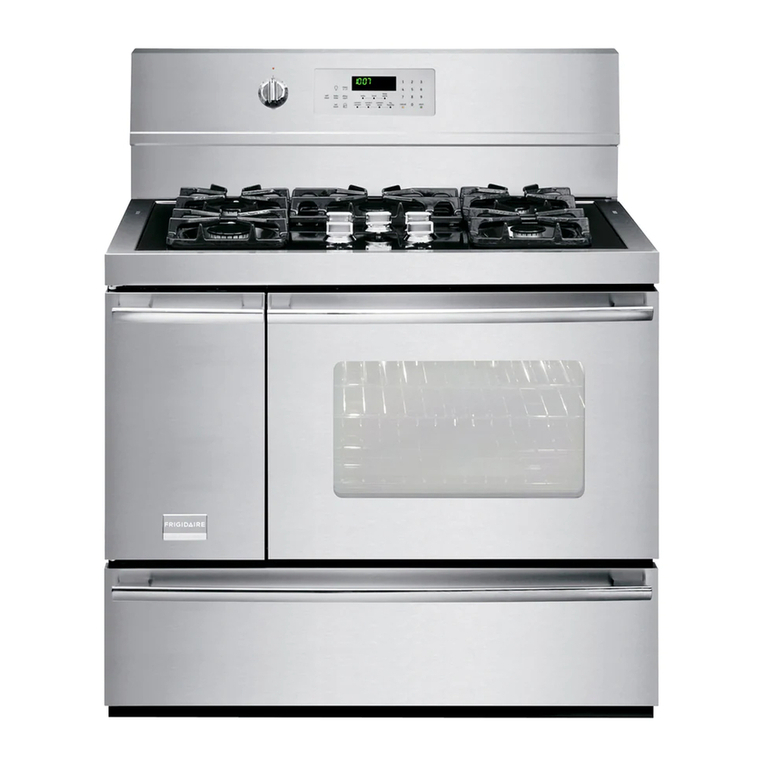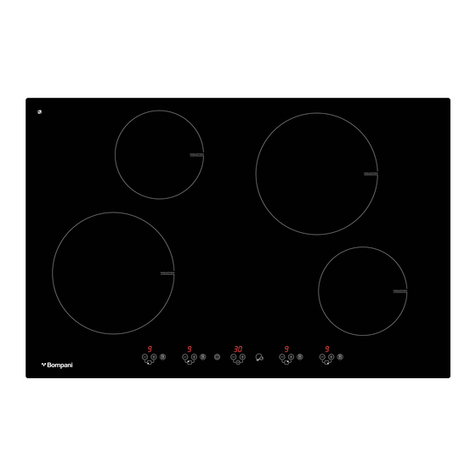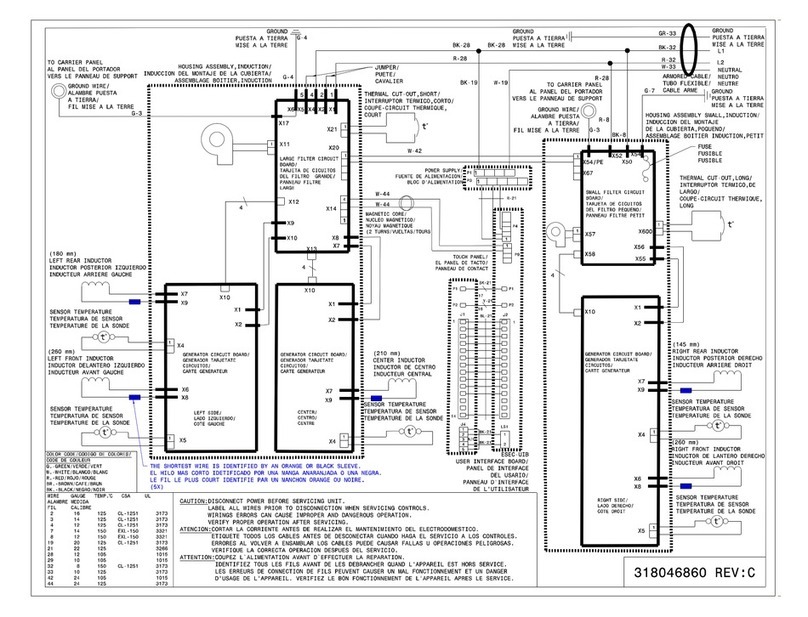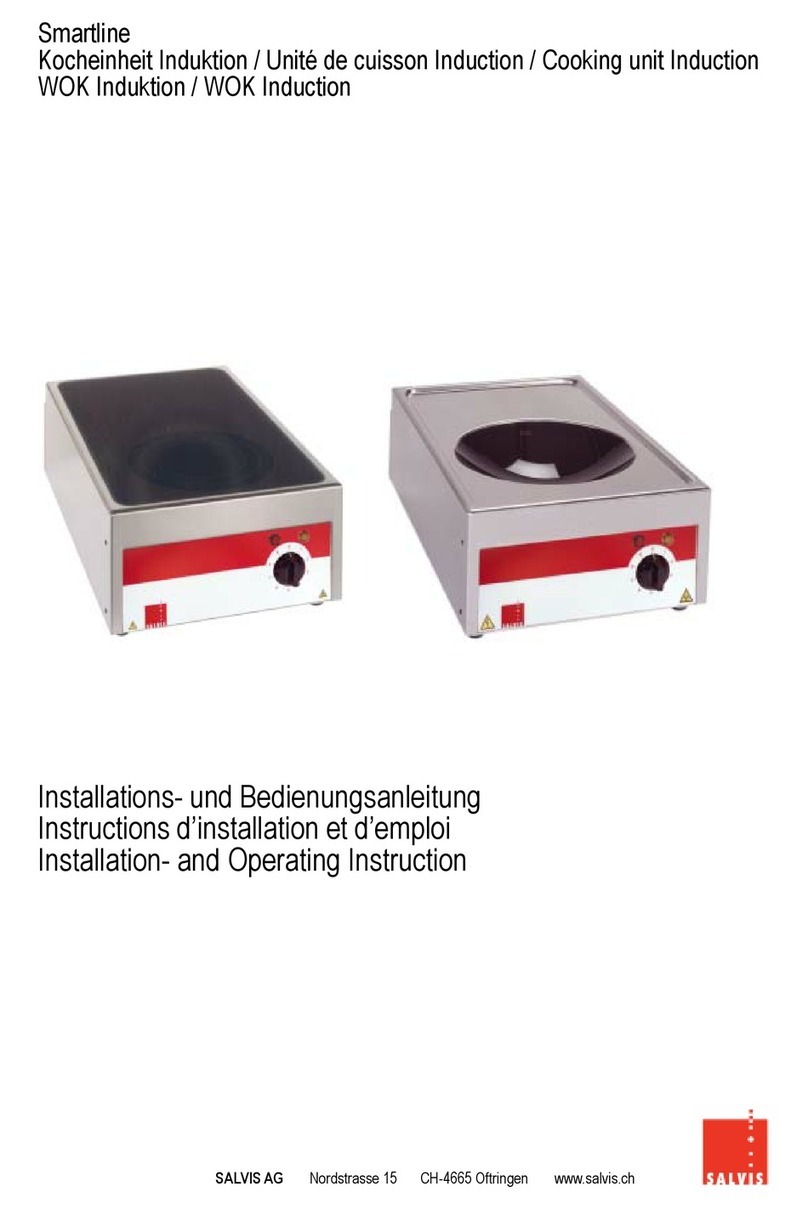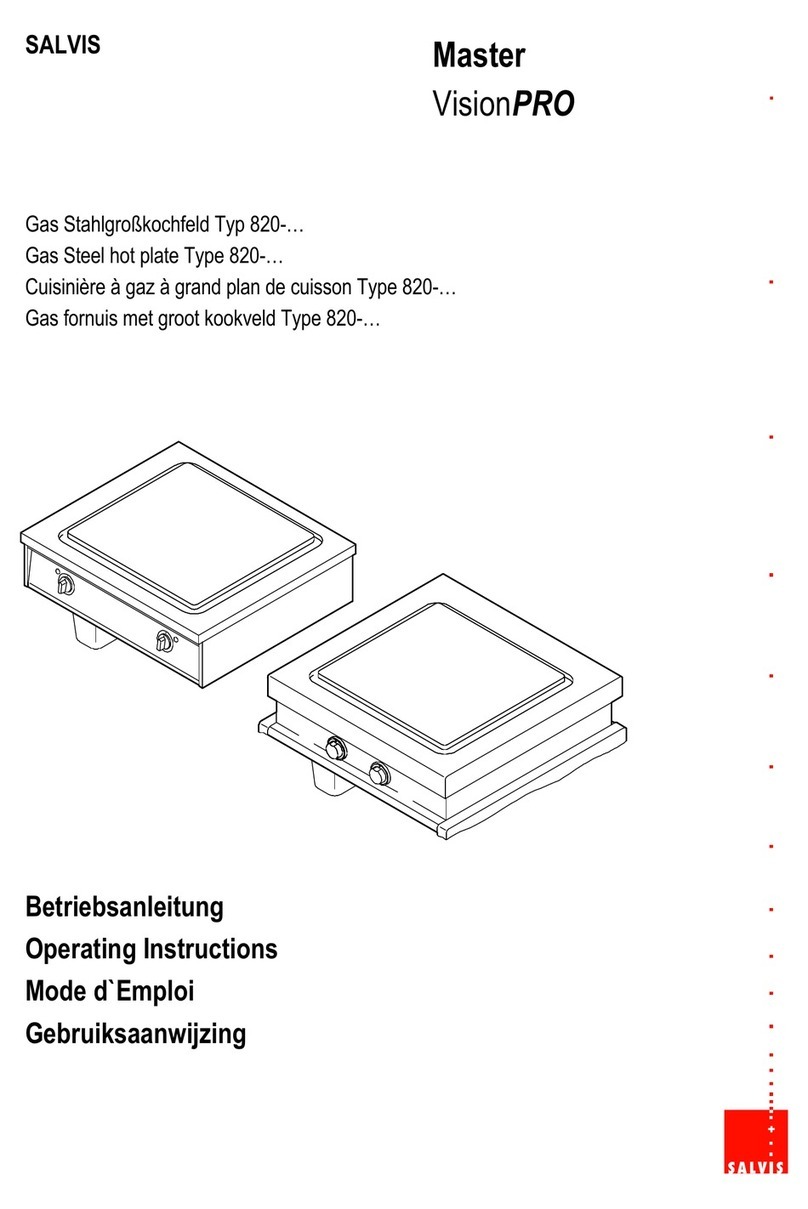
de
8 / 28
4.1 Stahlgroßkochfeld reinigen
4.1.1 Vorbereitende Arbeiten für die Reinigung
DDen Ablauf der Auffangrinne nicht verschlie
ßen, sonst kann Flüssigkeit in das Gerätein
nere dringen.
.Gerät ausschalten und abkühlen lassen.
Beschädigungsgefahr! Das Stahlgroß
kochfeld darf nicht schockartig abgekühlt wer
den. Durch starke Temperatursprünge kann
das Stahlgroßkochfeld beschädigt werden.
DEin großer Topf mit kaltem Wasser auf dem
Stahlgroßkochfeld verkürzt die Abkühldauer.
.Gastronorm-Behälter einsetzen.
4.1.2 Stahlgroßkochfeld reinigen
.Das Stahlgroßkochfeld mit fettlösendem Reinigungsmittel und einem Edelstahl-Spi
ralschwamm reinigen.
.Starke Verschmutzungen oder Rostansatz auf dem Stahlgroßkochfeld mit einem scheuern
den Putzmittel entfernen.
.Die gereinigten Flächen, ohne Verwendung von Reinigungsmitteln, mit einem sauberen
feuchten Spültuch nachreinigen. Anschließend die Flächen gründlich trockenreiben.
.Die Auffangrinne und das Ablaufrohr reinigen.
Verbrennungsgefahr! Wenn der Gastronorm-Behälter mit heißer Flüssigkeit gefüllt ist:
Verbrennungsgefahr beim Anfassen oder beim Überschwappen von heißen Flüssigkeiten!
.Den Gastronorm-Behälter entleeren und reinigen.
.Das Stahlgroßkochfeld durch kurzes Aufheizen trocknen.
.Nur vor längeren Betriebspausen: Speisefett oder Speiseöl dünn auf das Stahlgroßkochfeld
auftragen. Das Speisefett oder Speiseöl bei ca. 200°C (Drehschalter auf Stufe 5) für die
Dauer von ca. 10 Minuten einbrennen lassen.
.Während des Erhitzungsvorganges die Ablufthaube einschalten oder den Raum gut belüf
ten.
4.2 Edelstahlflächen reinigen
.Nach der Anwendung von scharfen Reinigungsmitteln die gereinigten Teile und Flächen,
ohne Verwendung von Reinigungsmitteln, gründlich mit einem sauberen feuchten Spültuch
abwischen.
.Edelstahlflächen mit fettlösendem Reinigungsmittel oder Spezial-Edelstahlpflegemittel reini
gen.
.Gereinigte Teile und Flächen mit weichem Lappen trockenreiben.
Gastronorm-Behälter
Auffangrinne
